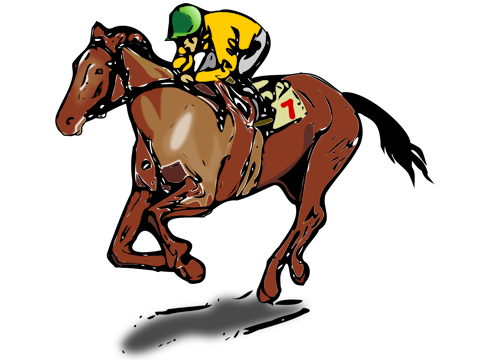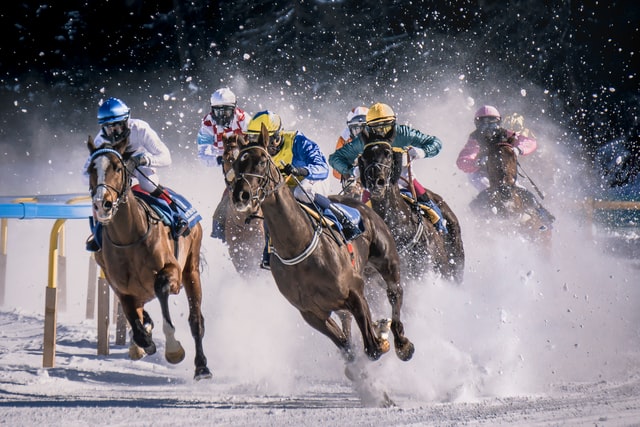 02.02.2022 - Draw bias is horses placed in different stall positions to win more frequently at specific tracks. Stalls are intended to ensure that no runner gains an edge at the start of shorter distance races, typically all flat races.
02.02.2022 - Draw bias is horses placed in different stall positions to win more frequently at specific tracks. Stalls are intended to ensure that no runner gains an edge at the start of shorter distance races, typically all flat races.

Source: unsplash
Numerous factors influence a draw bias in a race and its extent. Additionally, there will be an examination of how the various factors affecting drawing bias in a race might partially cancel one other out.
Horses are often loaded into stalls during the flat season when the timing is essential. There are stalls closer to the rails and further away from them, which are numbered sequentially. Horses who compete in long races, such as those during the jump season, will be grouped before the race begins. The starting stall is unnecessary because these races are more extended and contain fences. Thus, any edge at the beginning is regarded as insignificant.
The horse outperforms because it can easily follow the rails and run a shorter distance than some other horses. Hence, it is necessary to look at specific courses to thoroughly comprehend how the draw bias works and how the stalls will affect it.
Using Draw Bias to Your Advantage
It's essential to realize that various racing factors can influence draw bias before taking advantage of it. It would be best to base your horse racing betting model on rigid data with the help of tools and resources for horse betting. Still, there are also additional elements you can check out while investigating and predicting a draw bias.
When evaluating the impact of the draw on the eventual result, keep the following things in mind:
Course's Shape and Design
Horse racing features a diverse range of tracks that vary in shape and length. Long sweeping bends can be found on some tracks, while others don't have any at all. The order in which the turns are made can also affect the outcome.
So, if a race's initial turn occurs quickly after the start, outside runners will have difficulty taking the inside rail. On the other hand, considering that overtaking is more straightforward on the straight, a long run to the first turn provides the outside horses a better chance of winning the inside rail contest.
Race Distance and Ground
Understanding the influence of a draw bias throughout a race's distance is critical to trading opportunities. Long races (over 7 furlongs) are more affected by the draw than shorter races. It takes less time to rally if a horse outside misses the inside rail.
Additionally, the race track’s ground might also cause a draw bias. For instance, if it has rained during the race, the course drainage may affect the horses’ running, making one section faster than the others. Hence, it is vital to understand the horses' performance in various settings before asserting a draw bias.
Horse
The qualities of the horses are crucial for considering draw bias. This also explains why certain horses do well on one track but not another, even when the conditions appear to be ideal.
This would seem advantageous if a horse likes to lead a race and is drawn in a good stall. However, a draw on the outside would appear disadvantageous later as more energy is consumed and ultimately go further to take the early lead on the inside rail.
The number of runners in a race is also crucial in drawing bias. Fewer horses tend to reduce the likelihood of significant bias, as the horses involved are not scattered out. As a general rule, you should only consider drawing bias when you have at least eight horses in the race.
Draw bias can also complicate things when picking your horses, but everyone has their technique as its potential influence can be analyzed in numerous ways by crunching many numbers.
When calculating the odds for a given race, betters consider various factors. To illustrate, high-drawn runners at Goodwood, a famous draw bias course, had a -57 percent ROI (return of investment), whereas low-drawn runners had a -1 percent ROI.
With this, it is clear that horses starting from the outside are frequently overpriced and offer poor value for the price. While a horse may start at 10/1, if bettors rush to back it, it might wind up as low as 6/1 at the start of the race if enough people bet on it. The end outcome is the same, though, in that certain games have a far lower long-term profit margin.
Conclusion
Draw bias is an underappreciated weapon, and it is possible to obtain highly detailed and insightful draw statistics to pick up on patterns that other bettors are unaware of. Some courses include draw bias that can substantially impact the outcome of a competition. This is especially true given that only a few lengths decide many races. These kinds of short distances can easily be worth a friendly draw.
However, it is vital to remember that even if draw bias is an essential consideration in your bets, it should not be the sole determinant in your decision. Knowing about stall advantages is an excellent tool for any profit-driven punter, but it’s far from the only element to consider when betting. Nevertheless, knowing to withdraw bias advantage is an excellent edge on your next bet.




